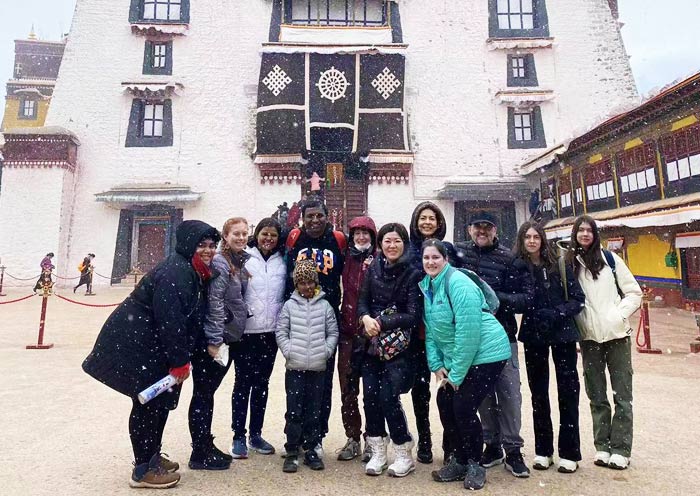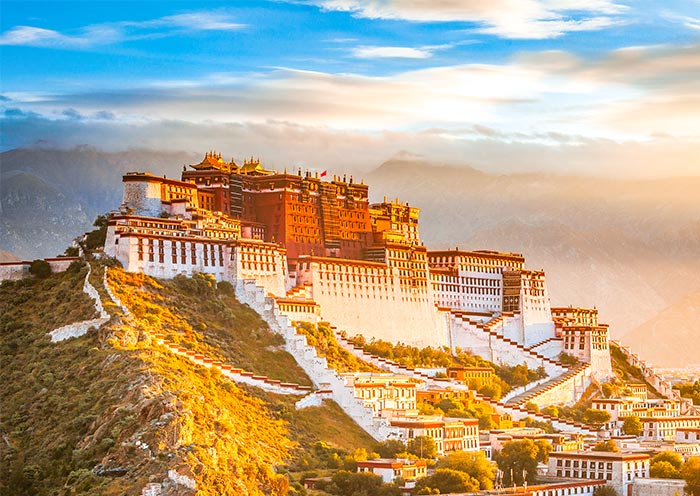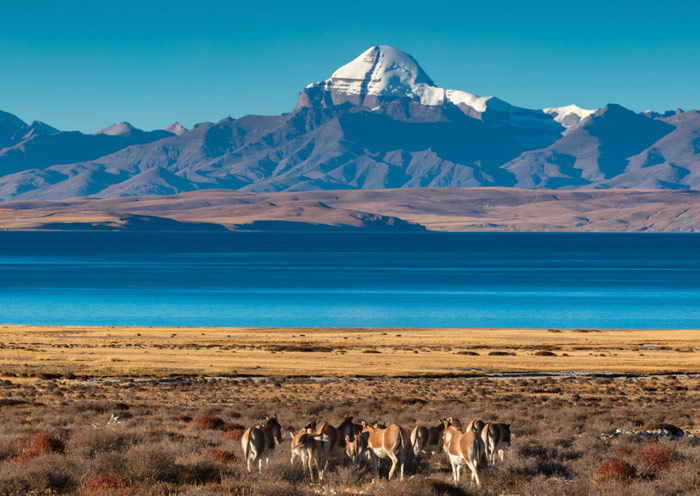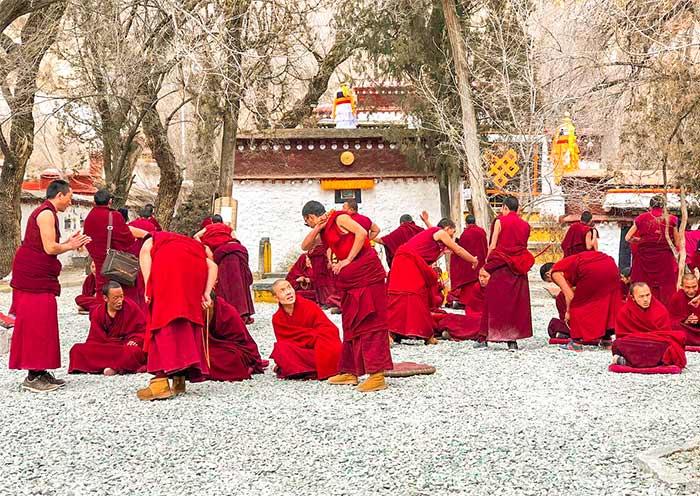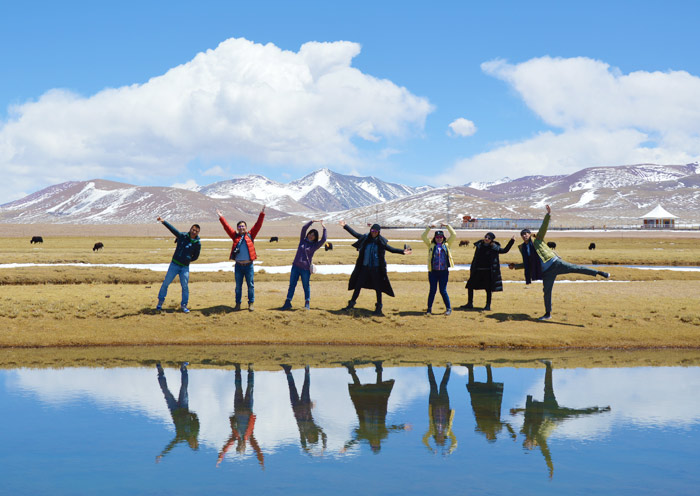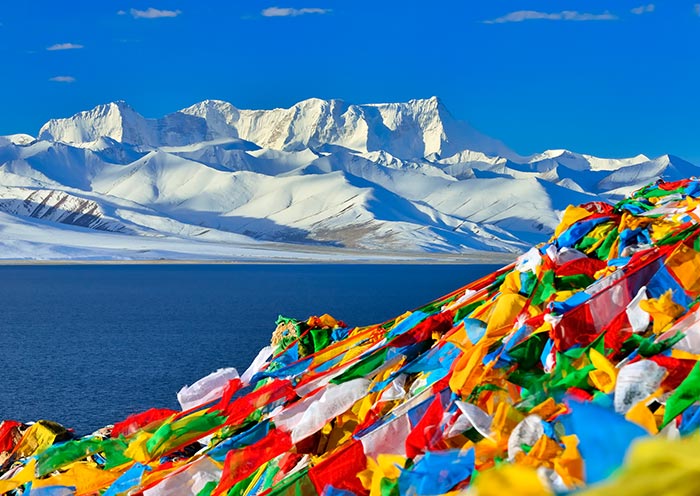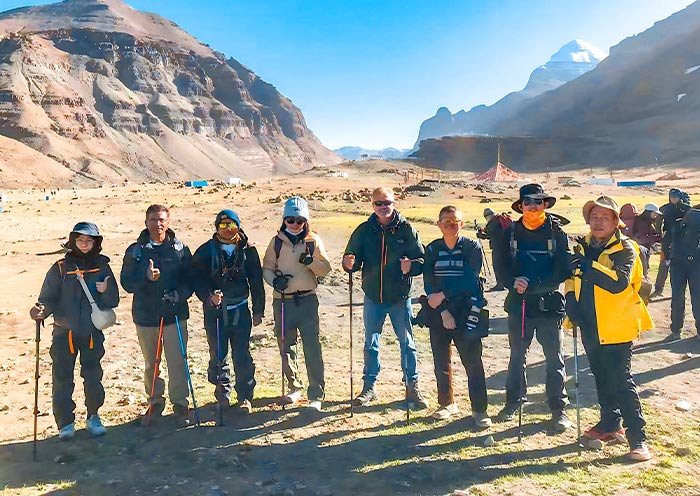Potala Palace History
Lhasa Potala Palace is a masterpiece with a rich history spanning over 1300 years. The name "Potala" translates to "residence of the Goddess of Mercy" in Tibetan, and the palace was first built during the reign of Tibetan King Songtsam Gambo in the 7th century. The 33rd generation of the Tubo Kingdom's ruler, Zanpu Songtsam Gambo, moved his capital to Lhasa and built the Potala Palace as his palace. Historical records reveal that the Red Hill was surrounded by three layers of walls, and a silver-copper bridge connected the palaces of Songtsam Gambo and Princess Wencheng. Songtsam Gambo's horse racing field was also located outside the east gate of the palace.
In 1645, the Fifth Dalai Lama undertook a significant renovation project, rebuilding the "White Palace" and the palace wall, gates, and corner towers. The government was moved from the Zhebang Temple to the Potala Palace to consolidate the political and religious power of the Ganden Phodrang regime. In 1690, the minister Sangye Gyatso built a stupa for the Fifth Dalai Lama and expanded the "Red Palace". The project was completed in 1693, and later, each Dalai Lama added five golden roofs and some ancillary buildings. Notably, after the completion of the stupa hall of the 13th Dalai Lama in 1936, the Potala Palace took on its present-day scale. The stupa hall of the 13th Dalai Lama, completed in three years starting in 1933, is the latest building in the Potala Palace. In December 1994, the Potala Palace of Lhasa was added to UNESCO's list of World Cultural Heritage.
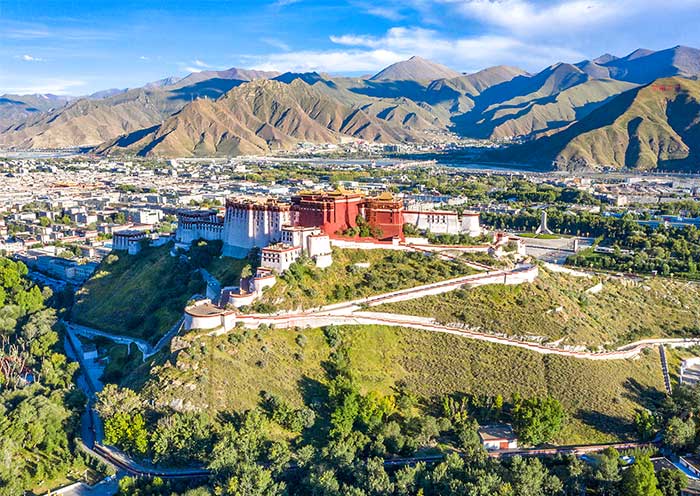
Architectures of Potala Palace
The awe-inspiring Potala Palace sits at an altitude of 3700 meters, making it the world's highest palace. Covering an expansive 360,000 square meters, the main building stands 117 meters tall with 13 floors, encompassing a range of structures including palaces, stupa halls, Buddhist halls, scripture halls, monk quarters, courtyards, and more.
The White Palace, serving as the residence of the Dalai Lama, is situated on the eastern side, while the Red Palace, housing Buddhist halls and stupa halls of previous Dalai Lamas, occupies the central area. In front of the Red Palace stands a towering white wall used as a sunning platform for large Buddha tapestries during Buddhist festivals. The palace's structure comprises stone and wood, with outer walls ranging from 2 to 5 meters thick.
Built into the mountain, the Potala Palace boasts an array of stacked buildings and towering halls exuding grandeur and magnificence. The solid granite walls, flat white walls made of rammed earth, dazzling golden roofs, and enormous gilded objects such as vases, pillars, and red banners with strong decorative effects, create a striking contrast of red, white, and yellow colors. The building's unique architectural style, with its combination of individual parts and layered construction, showcases the fascinating characteristics of traditional Tibetan architecture, leaving visitors in awe of its beauty and cultural significance.

White Palace - Residence of Dalai Lama
Potala Palace’s White Palace is located on the eastern side of the palace complex and serves as the residence of the Dalai Lama. It is seven stories high, with the top floor being the "Sunlight Palace," which serves as the Dalai Lama's bedroom. The Sunlight Palace is divided into two parts, the original western part and the later eastern part, which are similarly designed and serve as the 13th and 14th Dalai Lama's bedrooms and places where they handle political affairs. The sixth and fifth floors of the White Palace consist of living and office spaces. The fourth floor is home to the largest hall in the White Palace, the Eastern Great Hall (Coqen Hall). It houses the Dalai Lama's throne and an imperial plaque inscribed with the words "Supporting Tibet and Pacifying the Frontier" by Emperor Tongzhi. Major events at the Potala Palace, such as the Dalai Lama's enthronement and inauguration ceremonies, are held here.
The White Palace is connected to the Red Palace's lower section and the monks' residence called Zhasha, which is located west of the Red Palace. Zhasha is a place for the monks who serve at the Potala Palace, and at its peak, housed over 25,000 monks. Its outer walls are also white, so it is often considered a part of the White Palace.
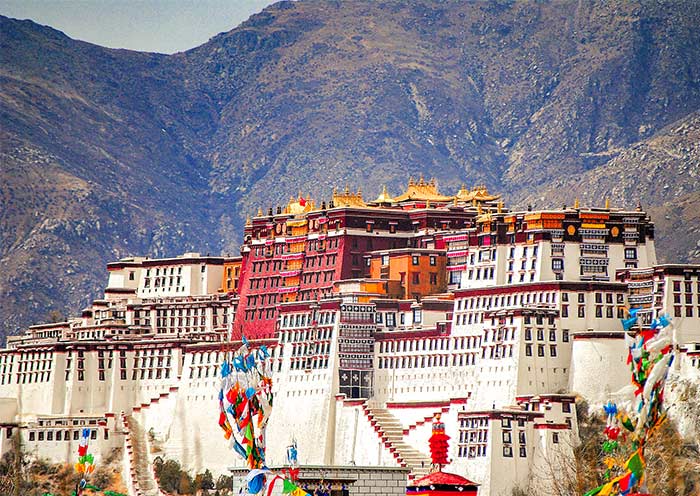
Red Palace - Buddhist Halls and Stupa Halls
The Red Palace is located in the central area of the Potala Palace, with red outer walls. The palace follows a mandala layout and is connected to the White Palace through a series of scripture halls and Buddhist temples built around the stupas of past Dalai Lamas. The primary structure of the Red Palace is the stupas of past Dalai Lamas, which includes five stupas for the 5th, 7th, 8th, 9th, and 13th Dalai Lamas. Though similar in design, the stupas vary in size, with the largest being the Stupa of the 5th Dalai Lama (Zanglınjingji), a three-story building supported by 16 large columns and containing the stupa of the 5th Dalai Lama at the center, flanked by the stupas of the 10th and 12th Dalai Lamas. The western hall of the Stupa of the 5th Dalai Lama, the Xiangtang West Hall (Coqenlu), is the largest hall in the Red Palace, measuring over 6 meters in height and 725.7 square meters in area.
The Law King Temple and the Holy Saints Temple in the Red Palace are stunning remnants of the ancient Tubo period. Legend has it that these sacred buildings were once the personal meditation sanctuary of Songtsen Gampo, and now they house awe-inspiring statues of the king, Princess Wencheng, Princess Chizun, and esteemed ministers. The Three Realms Pavilion is an architectural masterpiece and boasts the title of the tallest hall in the Red Palace. This holy site holds a treasure trove of precious scriptures and regal portraits of Qing dynasty emperors. The Tangcheng Hall (Luolakang) is a breathtaking sight to behold, with three magnificent copper mandalas that are worshipped by Tantric Buddhism followers. The Chiming Hall (Renzenglakang) is a serene and tranquil space that honors the memory of Lianhuasheng, the founder of the Nyingma sect of Tibetan Buddhism, and his many incarnations. The Lineage Hall (Zhongrelakang) is another awe-inspiring space that is home to a stunning golden statue of 12-year-old Sakyamuni, a silver statue of the 5th Dalai Lama, and the stupa of the 10th Dalai Lama.
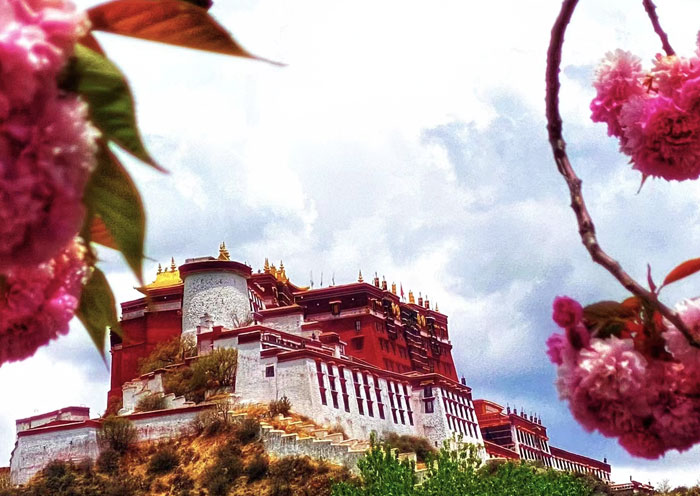
Best Spots to View & Photograph Potala Palace
Chakpori Hill - West Side of Potala Palace
On the west side of the Potala Palace, there is a mountain called Yaowang Mountain (Chakpori Hill, 药王山). It is one of the most popular spots to view the Potala Palace from a distance. With an altitude of just over 3700 meters, it only takes a few hundred steps to reach the viewpoint from the road. Its most famous feature, however, is the viewing platform halfway up the mountain, which is known as the best spot to photograph the Potala Palace. Every morning and evening, countless photography enthusiasts gather here to capture the first rays of sunlight on the palace. The design on the back of the current circulating 50 yuan Chinese banknote was actually photographed from this spot.
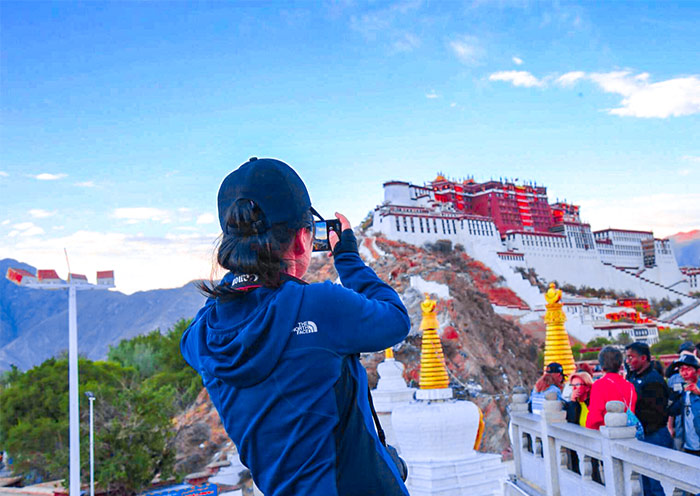
Zongjiao Lukang Park
Zongjiao Lukang Park (宗角禄康公园) is a beautiful park located behind the Potala Palace, offering visitors a peaceful environment to relax and enjoy the scenery. The park features a large pond, which provides a stunning reflection of the palace on the water's surface. With its tranquil atmosphere and impressive views, Zongjiao Lukang Park is an excellent spot to appreciate the grandeur of the Potala Palace.

Potala Palace Square
Potala Palace Square (布达拉宫广场), located in front of the palace, is another great place to view the majestic building. The square is spacious and well-maintained, providing an unobstructed view of the Potala Palace. At night, the palace is illuminated, creating a magical atmosphere. In addition to the stunning view, the square is also a popular gathering place for locals and tourists alike, making it a vibrant spot for people-watching and photography.
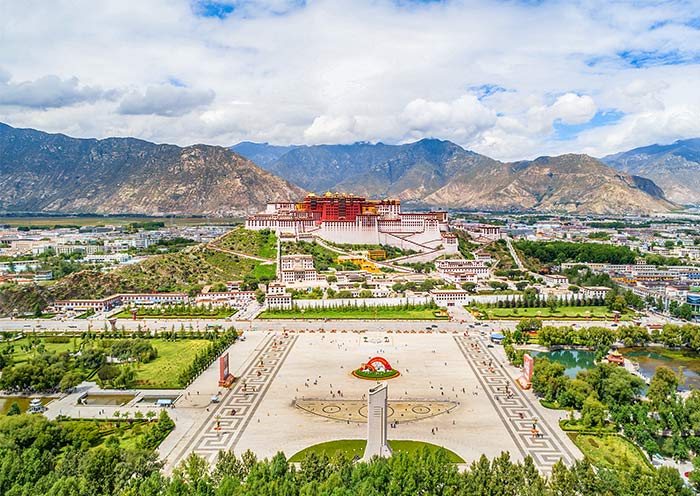
Potala Palace Kora - Experience Unique Tibetan Culture
Potala Palace Kora is a sacred pilgrimage route that surrounds the Jokhang Temple, Mount Yaowang, and the Small Jokhang Temple, collectively known as the "Lingkhor" in the local Tibetan language.
This circular route is considered a traditional pilgrimage route for Tibetan people during their ritual practices. The Kora consists of three circular routes, each one starting from the inside and leading to the outside. The first route takes pilgrims around the Jokhang Temple, the second route leads to the Potala Palace, and the third route takes pilgrims around Mount Yaowang and the Small Jokhang Temple. The Kora is a popular destination not only for pilgrims but also for tourists who wish to experience the rich cultural and spiritual heritage of Tibet.
As you make your way along the Kora, you'll be surrounded by stunning scenery and encounter various pilgrims and locals along the way. It's an experience that's both humbling and inspiring, leaving a lasting impression on all who undertake it.
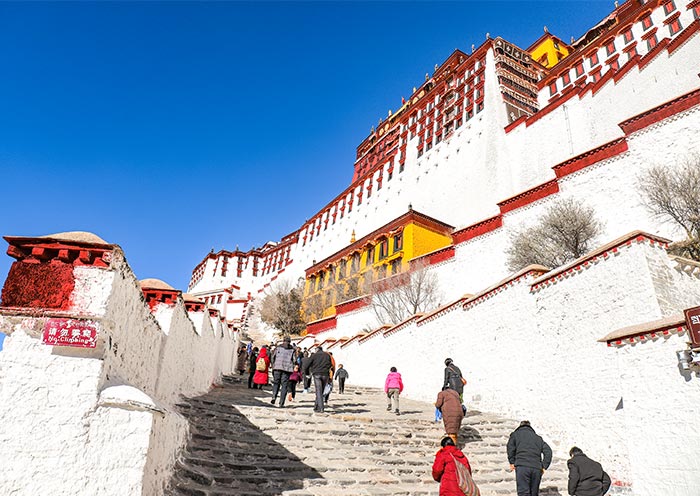
Potala Palace Location & How to Get to Potala Palace
Potala Palace is located in the city center of Lhasa, making it easily accessible by bus or taxi. And it can be very easy to walk from your hotel to Potala Palace.
Distance to Jokhang Temple: about 2 km, 20-30 minutes by walking
Distance to Sera Monastery: about 6 km, about 20 minutes by driving
Distance to Drepung Monastery: about 8 km, about 25 minutes by driving
Contact Us for More Transfer InfoPotala Palace Amazing Surrounding Attractions
Jokhang Temple
Jokhang Temple, located near Barkhor Street, is an awe-inspiring spiritual center in Tibet, with a rich cultural history dating back to the 7th century Tang Dynasty. The 1300-year-old temple is home to a life-size statue of Buddha Jowa Sakyamuni, and its timeless allure continues to draw pilgrims from all over the world who prostrate themselves in deep reverence. Its stunning architecture, which blends the styles of Tibetan, Tang, Nepalese, and Indian cultures, is a testament to its magnificence and cultural significance.
Learn more about Jokhang Temple >>

Barkhor Street
Barkhor Street is a must-see destination for travelers to Lhasa, Tibet. Located in the ancient part of the city, Barkhor Street is a hub of traditional Tibetan culture and customs. Visitors will find intact traditional-style streets, paved with stones ground by hand, and lined with colorful prayer flags fluttering in the breeze.
Barkhor is not only a cultural experience but also a market, with almost all houses facing the streets converted into shops. Visitors will find more than a thousand stalls along the street and down the alleyways selling a variety of goods, including butter, barley wine, meat, Tibetan shoes, and knives for daily use. Additionally, there are religious items such as Thangka, prayer wheels, and prayer flags. Walking along Barkhor Street is an excellent way to experience the unique culture and customs of Tibet, and visitors will be immersed in the sights, sounds, and smells of this bustling market.
Learn more about Barkhor Street >>
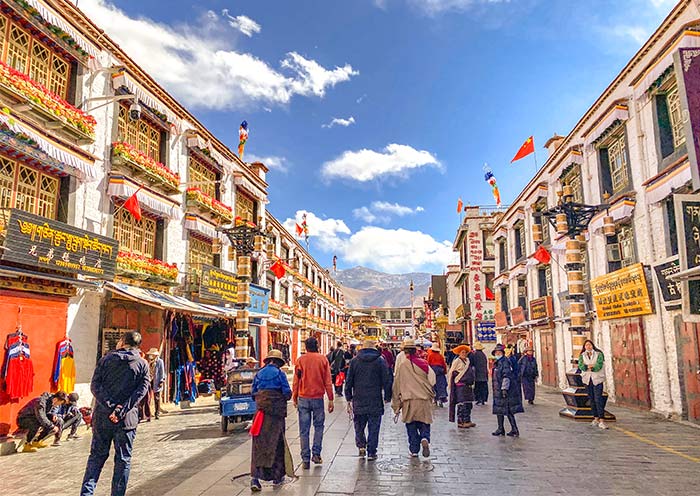
Tips for Visiting Potala Palace
Visiting the Potala Palace is an unforgettable experience, but it's important to know some local taboos and travel precautions to ensure a smooth and enjoyable trip. Here are some useful travel tips to help you prepare:
1. Altitude Sickness: Some travelers may get altitude sickness when visiting Potala Palace. A good state of mind is the best medicine to prevent altitude sickness. Consider taking anti-altitude sickness medication before your visit. Move slowly, eat lightly, and drink plenty of water.
2. Apply lip balm and stay hydrated to combat dryness.
3. Avoid catching a cold, which can lead to serious health issues.
4. Bring sun protection, skin care products, a hat, and sunglasses for the strong sunshine.
5. Bring a thick down jacket as the temperature inside the Potala Palace can be very low.
6. Those with severe high blood pressure and heart disease are advised not to visit.
7. Diplomats and foreign journalists are not permitted to visit Tibet.
8. Respect local customs and traditions to avoid offending anyone.
9. Portable oxygen cylinders are available in Lhasa if needed.
10. Do not enter the Buddha hall of the temple without permission, no smoking is allowed, and photographs require permission.
11. Do not walk counter-clockwise at prayer wheels and temples, and some tantric halls are off-limits to women.
12. Be polite and respectful to locals, avoid spitting or clapping, and do not fart in front of others.
13. Do not cross religious implements or brazier when visiting the Potala Palace.

How to Plan Lhasa Tours with Potala Palace
In Tibet, foreign travelers are required to explore with a travel agency. A 4-day Lhasa tour or an 8-day Lhasa Shigatse Mount Everest tour that includes a visit to the Jokhang Temple is a good way to experience the key attractions in the region.
A classic day tour of Lhasa typically includes a visit to the Potala Palace, Jokhang Temple, and Barkhor Street. The Potala Palace, built in the 7th century by the 33rd great king of Tibet, is the symbolic place of Lhasa and is home to the gilded burial stupas of former Dalai Lamas and the meditation Cave of the 33rd great king.
After visiting the Potala Palace, visitors can go to the Jokhang Temple, which was founded at the same time and by the same king as the palace. The temple houses the precious treasure of the statue of Buddha Sakyamuni at the age of 12.
Barkhor Street is a busy walking street in Lhasa where visitors can go shopping for various Tibetan handicrafts and souvenirs. Visitors can also join the Kora with pilgrims and locals to explore Tibetan religious culture more deeply.
Explore Tibet with Asia Odyssey Travel
Local based in Lhasa and Tibet over 10 years, our local team at Asia Odyssey Travel has carefully designed Tibet tours that offer a truly authentic and unforgettable experience. You can choose to travel in the comfort of a private tour with a flexible itinerary, or join a group tour that's budget-friendly without compromising on quality. Whatever your preference, Asia Odyssey Travel has a tour that caters to your needs and desires, ensuring that your journey to Tibet is an unforgettable adventure.
